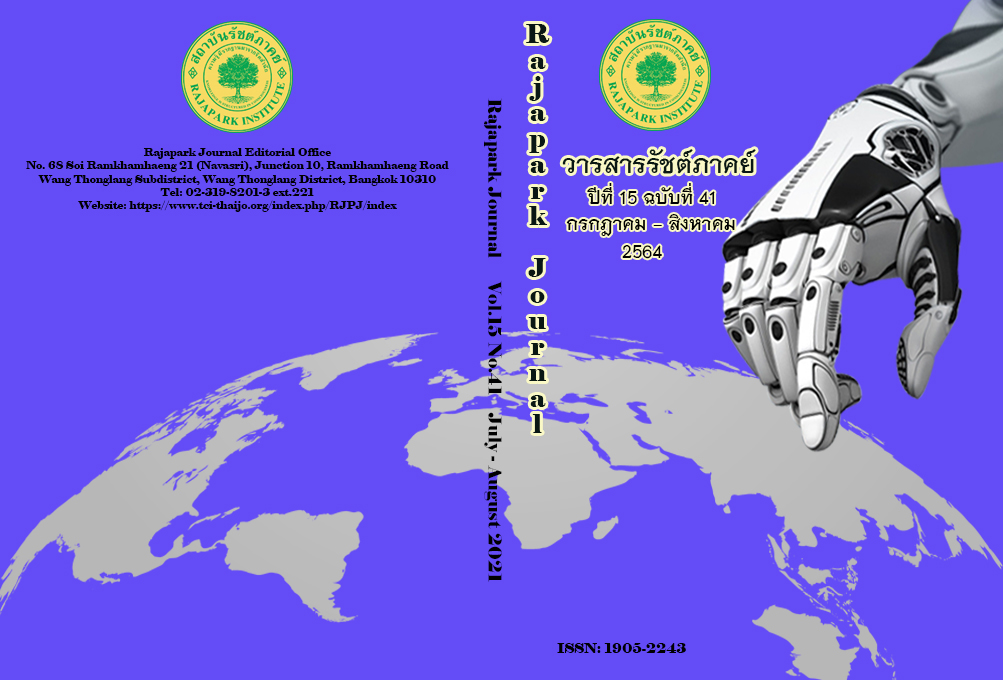กระบวนการยุติธรรมกับการระงับข้อพิพาททางเวชปฏิบัติในประเทศไทย
Main Article Content
บทคัดย่อ
การฟ้องร้องคดีข้อพิพาททางเวชปฏิบัติทำให้ความสัมพันธ์ระหว่างผู้ป่วยกับผู้ประกอบเวชปฏิบัติลดน้อยลง เกิดการรักษาพยาบาลแบบป้องกันตนเอง กล่าวคือ มีการการส่งตรวจทางพยาธิวิทยามากขึ้นละเอียดขึ้น ผลที่ตามมาคือค่าใช้จ่ายในระบบสาธารณสุขที่เพิ่มตามไปด้วย ประเทศไทยมีการนำระบบการชดเชยความเสียหายโดยไม่พิสูจน์ความผิด ซึ่งเป็นหลักการของกฎหมายต่างประเทศมาบังคับใช้ แต่ยังไม่สามารถแก้ปัญหาได้ดีเท่าที่ควร การวิจัยกระบวนการยุติธรรมกับการระงับข้อพิพาททางเวชปฏิบัติในประเทศไทย เป็นการศึกษาสาเหตุของข้อพิพาทที่อาจเกิดขึ้นได้ โดยศึกษากฎหมายไทยและต่างประเทศ ทั้งกระบวนการยุติธรรมหลัก และกระบวนการยุติธรรมทางเลือก การวิจัยครั้งนี้ใช้รูปแบบการวิจัยเชิงคุณภาพ ด้วยวิธีการวิจัยเอกสาร ผลการวิจัยพบว่า ระบบดังกล่าวถูกบัญญัติไว้ในมาตรา 41 แห่งพระราชบัญญัติหลักประกันสุขภาพแห่งชาติ พ.ศ. 2545 และมาตรา 63(7) แห่งพระราชบัญญัติประกันสังคม พ.ศ. 2533 อย่างไรก็ตาม การนำหลักกฎหมายไปสู่การปฏิบัติของกฎหมายทั้งสองฉบับ ยังไม่สามารถทำให้การชดเชยความเสียหายที่เกิดขึ้นครอบคลุมประชากรทั้งประเทศ และไม่สอดคล้องกับเจตนารมณ์ที่แท้จริงได้ ผลจากการวิจัยครั้งนี้เสนอให้ผลักดันให้มีกฎหมายเฉพาะโดยตราเป็นร่างพระราชบัญญัติคุ้มครองผู้เสียหายจากการรับบริการสาธารณสุข พ.ศ. ... และแก้ไขเพิ่มเติมเนื้อหาบางส่วนในของร่างพระราชบัญญัติดังกล่าว รวมทั้งแก้ไขเพิ่มเติมกฎหมายที่เกี่ยวข้องอื่น ๆ ควบคู่กันไปด้วย
Article Details
ทัศนะและความคิดเห็นที่ปรากฏในวารสาร ถือเป็นความรับผิดชอบของผู้เขียนบทความนั้น และไม่ถือเป็นทัศนะและความรับผิดชอบของกองบรรณาธิการ
เอกสารอ้างอิง
CANCERCARE. (2018). Understanding and Managing Chemotherapy Side Effects. Retrieved August 20, 2019, from http://media.cancercare.org/publications/original/24-ccc_chemo_side_effects.pdf
Krishna Murthy Iyer, T. K. (1996). Medical Negligence Viewed from Asia: A Comparative Approach: Discussion. World Health Forum, 17(3), 230-235.
Kunkeaw, A. (2016). Medical Malpractice. Bangkok: Krung Siam Publishing.
Mensch, B. (1981). Review: Freedom of Contract as Ideology. Stanford Law Review, 33(4), 753-772.
Myerson, R. B. (1997). Game Theory: Analysis of Conflict. Cambridge: Harvard University Press.
Permanent Secretary Office. (2017). Report on Public Health Resource in the year 2016. Bangkok: Ministry of Public Health.
Reuben, R. C. (2000). Constitutional Gravity: A Unitary Theory of Alternative Dispute Resolution and Public Civil Justice. UCLA Law Review 47, 952-960.
Riis, P. (1996). Medical Negligence. World Health Forum, 17(3), 215-239.
Saithanu, S. et al. (2003). Management of Medical Liability in Thailand. Journal of Health Science, 12(6), 876–888.
Schaffer, A. C., & Beshara, N. (2012). Principles and Practice of Hospital Medicine. China: China Translation & Printing, Ltd.
Sri-Ngernyuang, L. et al. (2010). Foreign Experience: No Fault Compensation System in Public health. Bangkok: Wandee-Kurndee Publisher.
The Healthcare Accreditation Institute (Public Organization). (2018). Patient Safety Goals: Simple Thailand 2008. Retrieved August 16, 2019, from http://134.236.247.146:8080/edoc1/uploads/DocNum_20180807143936.pdf
World Health Organization [WHO]. (2009). Who Patient Safety Curriculum Guide for Medical Schools. France: WHO.
Wu, A. W. (2000). Medical Error: The Second Victim. Western Journal of Medicine, 172(6), 358-359.


